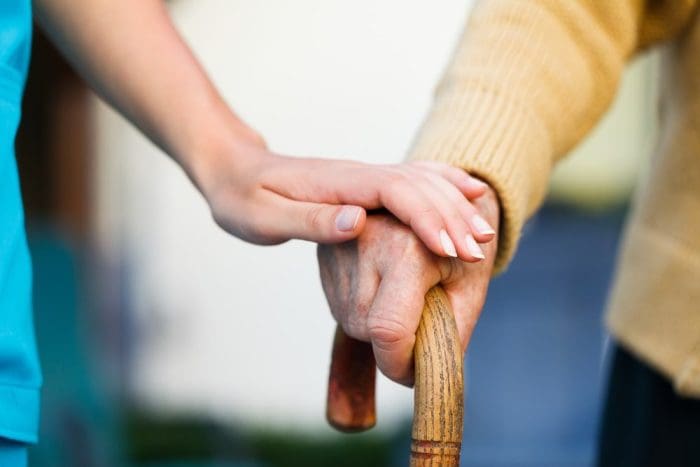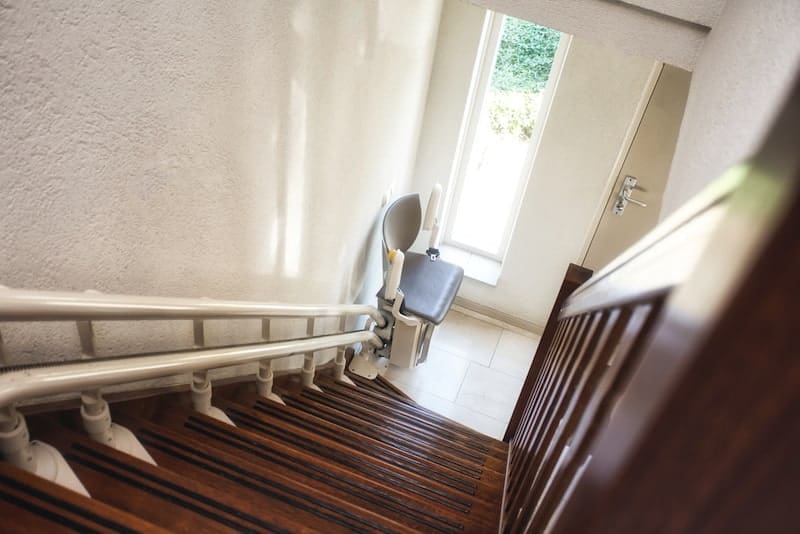As we age, our homes can become less safe, increasing the risk of falls. A senior fall alert device can provide added protection. Simple home safety modifications, such as installing a senior fall alert device for the elderly, can help older adults stay independent. Small tweaks like incorporating an alert system can make a big difference in preventing falls and making daily life safer.
Many seniors want to stay in their own homes as they get older. This is called aging in place. But to do this safely, we need to look at our homes with fresh eyes. We need to spot and fix any hazards before they cause problems. Things like loose rugs, poor lighting, and hard-to-reach items can all lead to accidents.
Making our homes safer isn’t just about avoiding falls. It’s about creating a space where we can live well and feel at ease. This might mean adding grab bars in the bathroom, improving lighting, or rearranging furniture. The goal is to make our homes work for us, not the other way around.
Key Takeaways
- Simple home changes can help seniors stay safe and independent
- Regular safety checks can prevent accidents and make daily tasks easier
- Creating a comfortable living space supports overall well-being for older adults
Evaluating Home Safety and Identifying Potential Hazards
A safe home environment is crucial for seniors. I’ll explore how to spot risks and perform a thorough safety check.
Assessing Risk Factors for Falls and Accidents
I start by looking at common danger zones. Loose rugs and cords are trip hazards. Poor lighting makes it hard to see obstacles. Slippery floors in bathrooms and kitchens can lead to falls.
Stairs need handrails on both sides. Grab bars help in the bathroom. I check that seniors can reach items without stretching or climbing. Clutter should be cleared from walkways.
I also think about health issues that increase fall risk. Poor eyesight, balance problems, or certain meds can make accidents more likely. Talking to a doctor about these factors is smart.
Conducting a Comprehensive Home Safety Checklist
A room-by-room review helps catch all hazards. In the kitchen, I make sure appliances work well and are easy to use. Smoke detectors should be on every floor.
I check that locks on doors and windows are secure. Good outdoor lighting is key for nighttime safety. Inside, bright bulbs in all rooms help prevent trips.
Here’s a basic checklist to start:
- Remove trip hazards like cords and rugs
- Install grab bars in the bathroom
- Improve lighting throughout the home
- Secure loose handrails on stairs
- Clear clutter from walkways
- Check smoke detectors
A full assessment may need an expert. But this list is a good first step to make a home safer for seniors.
Key Modifications for Mobility and Accessibility

Improving mobility and accessibility at home is crucial for seniors’ safety and independence. I’ll cover essential modifications for different areas of the house to create a more senior-friendly living space.
Installing Ramps and Widening Doorways for Wheelchair Access
Ramps are a must for seniors using wheelchairs or walkers. I recommend installing a ramp with a gentle slope at the main entrance. The ideal ratio is 1:12, meaning 1 inch of rise for every 12 inches of length.
Doorways should be at least 32 inches wide to allow easy passage. If needed, I suggest removing door frames and installing offset hinges to gain extra width.
For thresholds higher than 1/2 inch, adding small ramps on both sides can help. These changes make moving between rooms much safer and smoother for seniors with mobility aids.
Updating Stairs and Hallways with Safety Features
Stairs can be risky for seniors. I always advise installing handrails on both sides of staircases. They should be 1 1/4 to 1 1/2 inches in diameter for a good grip.
For those who can’t use stairs, a stairlift is a great option. It allows seniors to move between floors safely and easily.
In hallways, I suggest adding grab bars along the walls. These give extra support when walking. Good lighting is also key. Motion-sensor lights can help prevent falls at night.
Non-slip flooring is another important safety feature. Carpet with a low pile or textured vinyl works well in high-traffic areas.
Bathroom Alterations for Senior Safety
Bathrooms can be dangerous for seniors. I always recommend installing grab bars near the toilet and in the shower or tub. These should be able to support at least 250 pounds.
A walk-in tub or curbless shower with a seat is safer than a standard tub. Adding non-slip mats or textured strips can prevent slips.
Raised toilets, about 2 to 4 inches higher than standard, make sitting and standing easier. A bidet attachment can help with personal hygiene.
Good lighting is crucial. I suggest adding night lights and ensuring the main light is bright enough. Lever-style faucet handles are easier to use than knobs.
Modifying Kitchens to Reduce Accident Risks
In the kitchen, lowering countertops to about 32 inches high can help seniors who use wheelchairs or have trouble standing for long periods. Pull-out shelves in cabinets make items more accessible.
I always suggest installing lever-style handles on cabinets and drawers. They’re easier to grip than knobs. D-shaped handles work well too.
A side-by-side fridge is more accessible than a top-freezer model. For the stove, front-mounted controls are safer and easier to use.
Good lighting is key. Under-cabinet lights can brighten work areas. Contrasting colors for countertops and floors can help those with vision issues.
Fostering a Supportive Environment for Care and Comfort
Creating a supportive home for seniors is key. It helps them feel safe and comfortable as they age in place. Good care and comfort can boost their quality of life.
Enhancing Bedroom Safety and Comfort for Restful Sleep
A cozy bedroom is vital for seniors. I suggest adding grab bars near the bed for easy movement. A firm mattress can help prevent falls and back pain.
Nightlights are a must. They light the way to the bathroom at night. Smoke detectors should be installed in or near bedrooms. This gives early warning if there’s a fire.
Natural light is great for sleep cycles. I recommend easy-to-open curtains or blinds. A bedside table should be within reach. It’s perfect for glasses, water, and a phone.
For those with hearing aids, a special alarm clock can help. Some vibrate or flash lights to wake seniors up.
Ensuring Proper Communication with Caregivers and Family
Good communication is crucial for senior care. I advise setting up a simple phone system with large buttons. This makes it easy to call for help.
A whiteboard in a common area is useful. It can list daily tasks, meds, and visitor info. For tech-savvy seniors, a tablet can be great. It allows video calls with family and doctors.
Cameras can offer peace of mind to family members. But it’s important to respect privacy. Only use them with the senior’s okay.
For seniors with dementia, picture phones can help. They show photos of contacts for easy calling.
Preparing for Emergency Situations and Quick Response
Being ready for emergencies is a must. I strongly suggest a medical alert device. Seniors can wear it and call for help with one button press.
Keep a list of emergency numbers by all phones. This should include family, doctors, and poison control. A first aid kit should be easy to find.
For seniors with diabetes, keep sugar sources handy. This helps in case of low blood sugar.
Make sure paths to exits are clear. This is key in case of fire. Have a plan for power outages too. Keep flashlights and batteries in easy-to-reach spots.
Carbon monoxide detectors are as important as smoke alarms. Place them on every floor of the home.


